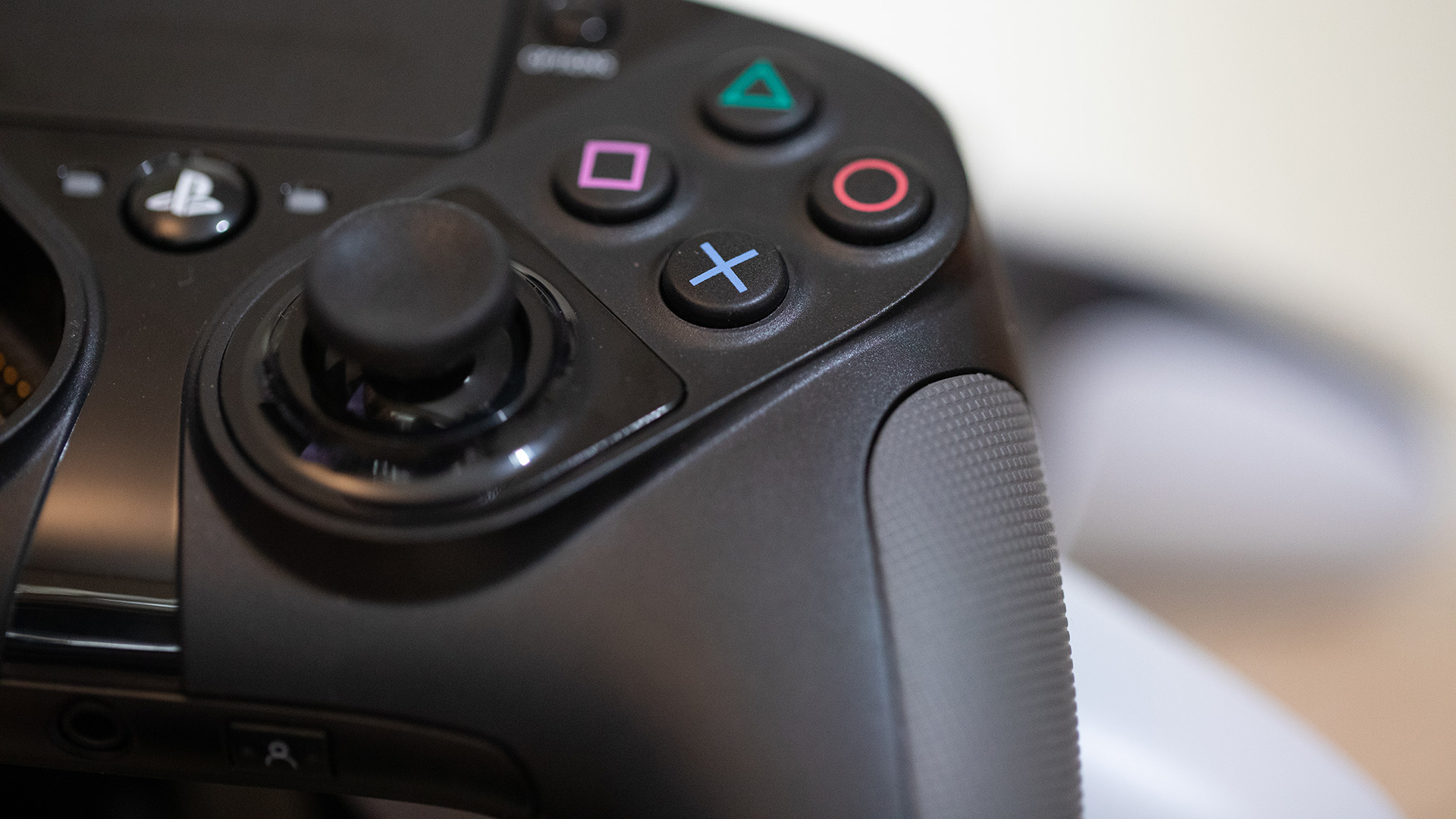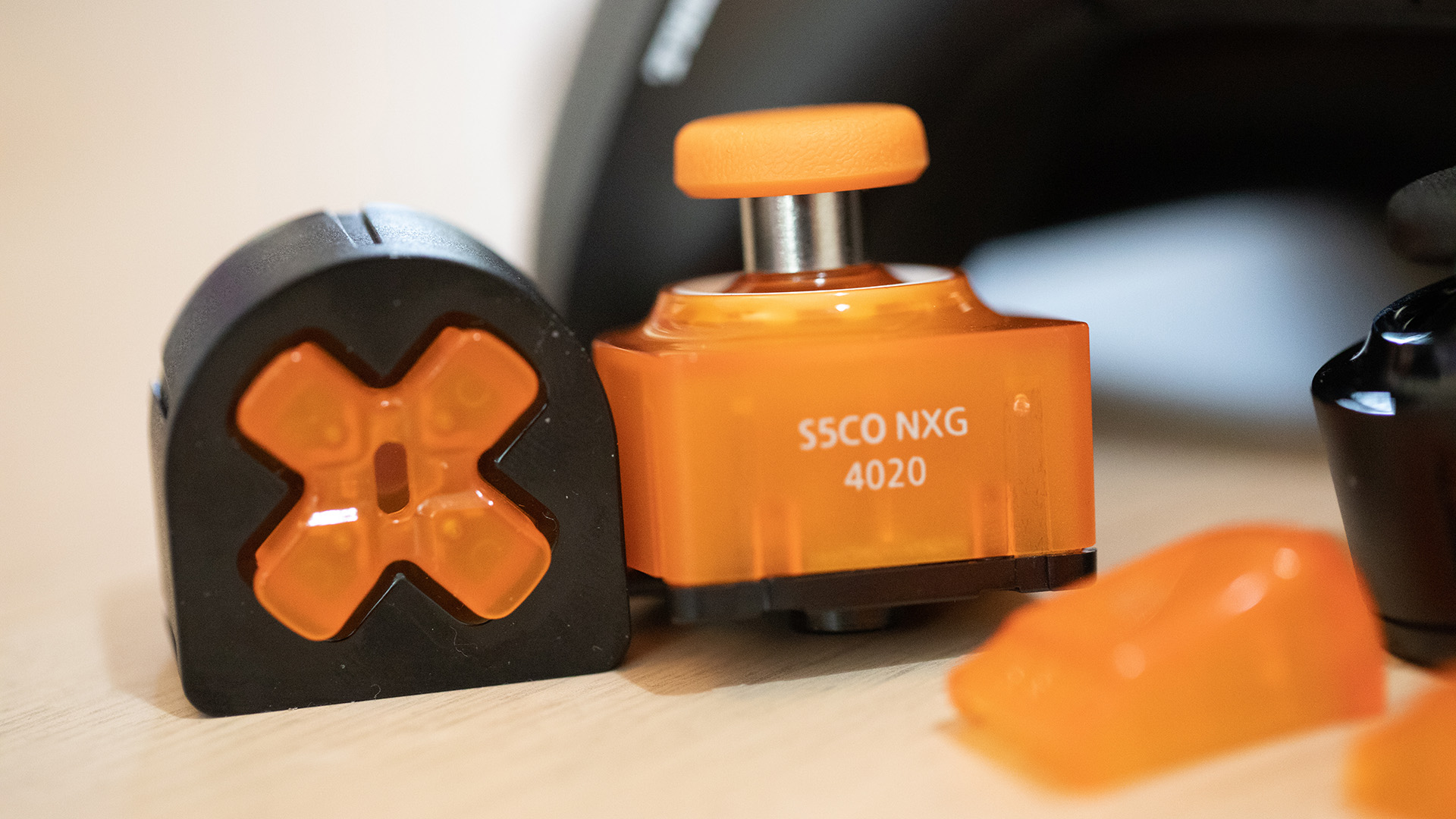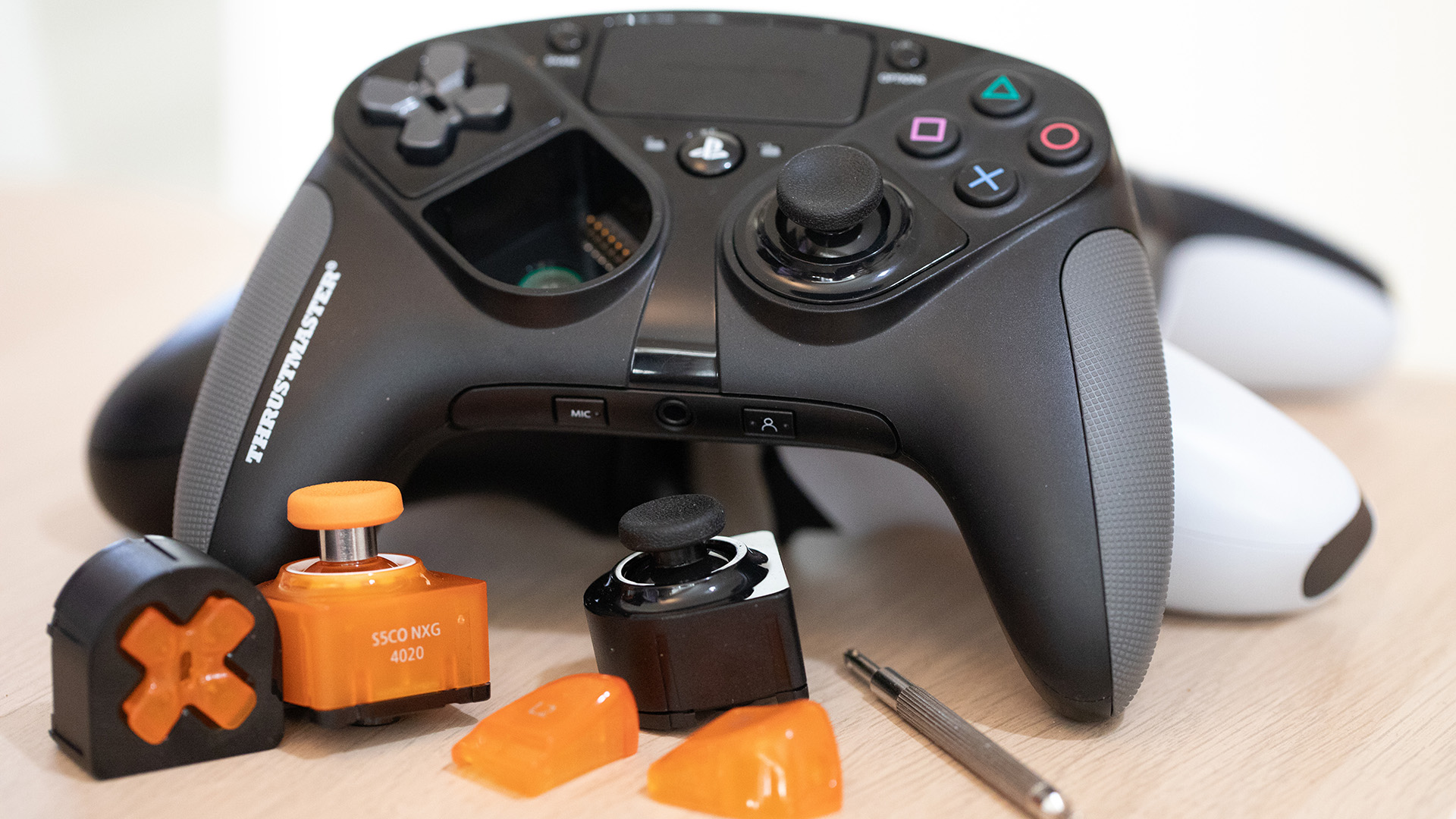Our Verdict
It coulda been a contender, but the Eswap Pro needs those next-gen sticks to really stand a chance. Ultimately, it’s just too expensive and has too many other flaws.
For
- Feels really good in the hand
- Excellent next-gen sticks
- Tiny screwdriver in the package
Against
- Far too expensive
- Poor standard D-pad
- Software issues
PC Gamer's got your back
The Thrustmaster Eswap Pro with its next-generation sticks installed is possibly one of the nicest controllers I’ve ever held, almost worth considering for our best PC controller guide, and I’ve been gaming since the ‘80s. That said, the steps you have to take and the price you have to pay to get to this state of potential nirvana—$180 for the base controller, $40 for the extra module pack—make it only feasible for the crazy or the rich. Or both.
Compatibility: Windows 10, PlayStation 4
Interface: USB 2.0
Cables: 2m micro USB
Accessories: Screwdriver, soft bag
Dimensions: 228 x 76 x 194 mm
Weight: 385 g
MSRP: $180
Let’s start with the basics. The Eswap Pro is a controller whose parts (except the face buttons and bumpers) nestle in sockets, so they can be swapped out. Hence the name. At the bottom of each socket is a magnet that holds the module in place, and they can be hot-swapped while the controller is connected and active. That magnet makes for an excellent swapping experience, as it snaps the new module into place with a positive snap that leaves you in no doubt that it’s connected.
The thumbsticks can be pulled out with your fingers, but the D-pad requires the services of the small double-ended screwdriver that comes packed in with the controller. The two tiny screws—so tiny, in fact, that I was surprised not to find replacements in the box—hold the triggers in place are the target for the Phillips end.
The unit we received for review came with a pack of extra modules in a brazen orange colour, the D-pad and triggers nothing but cosmetic replacements, but the analogue sticks are the next-gen variants. And by next-gen, they really mean it. The Eswap Pro is a licensed PlayStation controller, so the face buttons have the standard shape symbols on them rather than Xbox’s ABXY. The sticks, by default in a side-by-side configuration, can be swapped to a more Xbox-like position if that’s what you like.
The standard stick is stubby, with a concave textured top and a decent amount of resistance. The next-gen stick is taller, slightly easier to push but also more eager to return to its central position. You get a choice of concave or convex tops, but being able to roll your thumb around the rim of a convex tip, edging it gently away from upright, is surely the best way to use a thumbstick. The next-gen tops are also slightly larger than the standard models, and this, combined with the additional shaft length, make for a truly premium experience.

Elsewhere, however, things aren’t as promising. Take the D-pad. No, please, take it away. Both the standard model and the one in the add-on pack are loose, flimsy-feeling, and too thin to get a decent thumb-roll on when going for a fireball. Your thumb makes too much contact with the plastic of the controller body to get a really fluid motion.
Contrast with the Xbox Elite pad, where the cross has evolved into a circle, and things are night and day. The DualSense, a really good pad in its own right, and the Xbox One pad both have thicker buttons here, and are better for certain games as a result. A circular D-pad is available in the Fighting Pack of add-ons, but that’s just more expense on top of an already pricey controller.
The face buttons—the ones you can’t change—suffer a similar fate. They’re clicky enough and don’t take much pressure to bottom out, but you can hear the spring underneath them, and they move slightly within their sockets. They feel a bit cheap, basically, which is not what you want on a pad that costs twice as much as the standard Xbox One model.

Those tiny screws, once removed, allow the triggers to be popped off, and some packs of add-ons include extended triggers. Otherwise, the ones in the orange pack I was provided do nothing but change the colour. That colour, by the way, fades considerably once it’s applied to the black controller. Taken out of the pack it really dazzles, but once socketed seems dull. A fault of being slightly translucent. You can plug your headset into the controller, and being a PlayStation model there’s the small touchpad at the top too.
Underneath, there are four additional buttons that can be individually assigned to commands using the Thrustmapper software. Or at least that’s the idea. First, it triggered an alert in my browser that it couldn’t be downloaded securely, then when downloaded and installed, it didn’t work, throwing errors over both the names of new profiles and the configuration of the controller, even though it had been put back into its default state.
The very best configuration of this controller would be for the software to work flawlessly and with both thumbsticks replaced with the next-gen ones. This would push the cost up even more, and for a pad that’s not even wireless, that’s a price I suspect most people are not going to want to pay. Not when there are so many perfectly good controllers out there for considerably less. Our favourite pad, the Xbox Elite Series 2, is the same price as the base model of the Eswap and is simply so much better. Sadly, something that comes so close to glory, has instead been betrayed by its own components.
It coulda been a contender, but the Eswap Pro needs those next-gen sticks to really stand a chance. Ultimately, it’s just too expensive and has too many other flaws.

Ian Evenden has been doing this for far too long and should know better. The first issue of PC Gamer he read was probably issue 15, though it's a bit hazy, and there's nothing he doesn't know about tweaking interrupt requests for running Syndicate. He's worked for PC Format, Maximum PC, Edge, Creative Bloq, Gamesmaster, and anyone who'll have him. In his spare time he grows vegetables of prodigious size.


